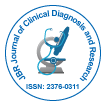Editorial
Canceromics and P3 medicine
Ashutosh Halder*
Department of Reproductive Biology, AIIMS, Delhi, India
- Corresponding Author:
- Ashutosh Halder
Department of Reproductive Biology
AIIMS, New Delhi, India
Tel: 91-11-26594211
E-mail: ashutoshhalder@gmail.com
Received Date: November 22, 2014; Accepted Date: November 22, 2014; Published Date: November 29, 2014
Citation: Halder A (2015) Canceromics and P3 medicine. J Clin Diagn Res 3:e104. doi:10.41722376-0311.1000e104
Copyright: © 2014 Halder A. This is an open-access article distributed under the terms of the Creative Commons Attribution License, which permits unrestricted use, distribution, and reproduction in any medium, provided the original author and source are credited.
Abstract
Cancer is a disease of the genome. The first evidence for the role of genetics in cancer causation was identification of Philadelphia chromosome in chronic myeloid leukaemia [1] and now we are in such a state that we can create neoplastic cells in the laboratory through genetic manipulation of normal cells. Normal cells can be transformed into cancer cells by introducing few genes (hTERT, Ras, large T oncoprotein of simian virus 40, etc.) in embryonic cells or telomerase negative cells [2]. De novo neoplastic transformation is initiated by a genetic lesion due to an error occurring during normal cell division. This initial event provides a platform for other genetic lesions to develop in due course of time. When the proper combination of genetic lesions accumulates in cell, it becomes malignant. Neoplastic cells possess numerous chromosomal (aneuploidy, polyploidy, rearrangements, deletions, amplifications, etc.) and/or genomic (mutations, small deletions and small insertions) and/or epigenomic (promoter/euchromatin permethylation, heterochromatin deacetylation, miRNA, etc.) alterations. This genomic changes are multi steps process and mainly due to failure in check points of cell cycle regulation. Genomic and epigenomic abnormalities are more with alignant and metastatic tumors than benign tumors. The hallmark of cancer cells are genetic instability, self-maintained replication, neo-angiogenesis, invasion and metastasis and longer survival. Furthermore, every cancer patient is different, every tumor is different, every tumor cells with 100s of genomic/ epigenomic abnormalities (more with lung cancers, melanomas, etc.

 Spanish
Spanish  Chinese
Chinese  Russian
Russian  German
German  French
French  Japanese
Japanese  Portuguese
Portuguese  Hindi
Hindi